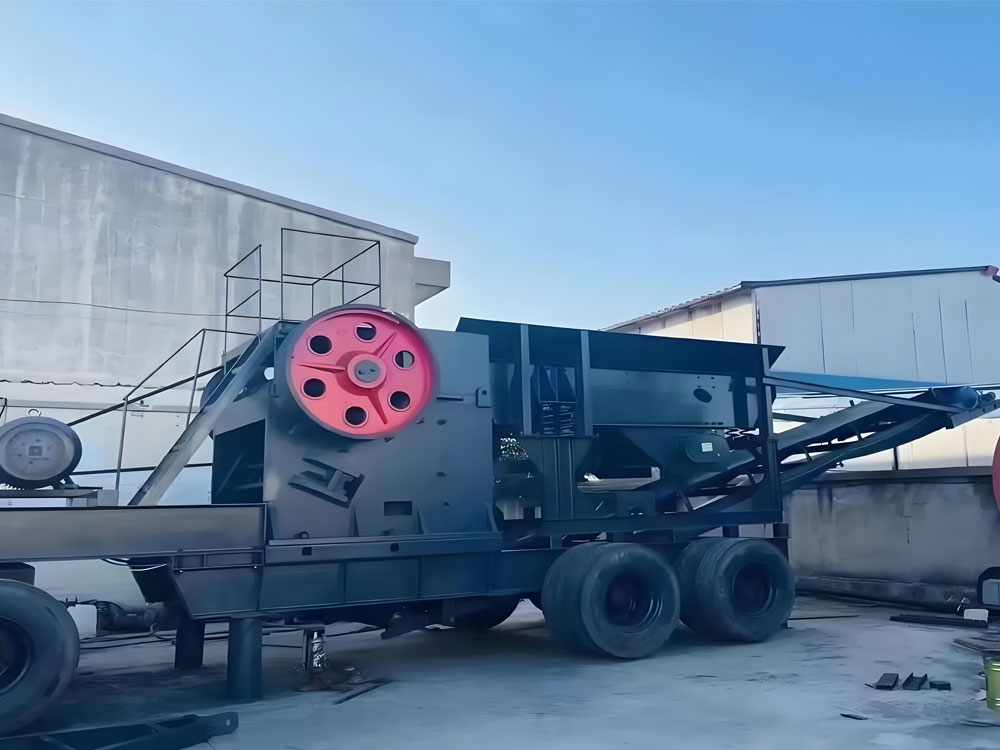Crusher Selection Guide: Choosing the Right Machine Based on Material Hardness
In any successful mining or aggregate production venture, crusher selection is arguably the most important engineering decision. The single biggest factor influencing this choice isn’t the desired output capacity, but the physical property of the feed material itself—specifically, its material hardness. Understanding how rock hardness interacts with crushing equipment is the key to minimizing operational costs and maximizing efficiency.
The Science of Hardness: Why It Matters for Crushing
Hardness is primarily measured using the Mohs Scale, which ranks minerals from 1 (softest, e.g., Talc) to 10 (hardest, e.g., Diamond). For crushing purposes, the material’s hardness directly affects two critical operational aspects:
- Wear Rate on Parts: Harder, more abrasive materials (like quartz or granite) cause rapid and severe wear on the steel components (known as wear parts or consumables) of the crusher. This drives up maintenance costs and increases downtime.
- Energy Consumption: Crushing extremely hard materials requires significantly more brute force and energy compared to crushing softer rock. Selecting a machine designed for pure compression often uses energy more efficiently for these materials than one relying on impact.
Matching Crusher Types to Rock Hardness
Choosing the correct mechanism—compression, impact, or shearing—based on the material’s hardness is paramount for performance and equipment longevity.
1. Very Hard and Abrasive Materials (Mohs 6.5+): The Compression Solution
For materials like granite, basalt, iron ore, and quartz, which are highly abrasive, compression is the most durable and cost-effective method.
- Primary Stage: Jaw Crusher. These machines are designed with massive steel plates to withstand the immense pressure required for primary crushing. They excel at reducing large, hard boulders without excessive wear.
- Secondary/Tertiary Stage: Cone Crusher. Utilizing the same principle of compression, cone crushers provide a high reduction ratio and produce a cubical product shape while protecting wear parts from the rapid deterioration that impact would cause.
2. Medium Hardness Materials (Mohs 4 – 6.5): Balanced Performance
For materials like limestone, medium-hard sandstone, or dolomite, operators have more flexibility, often prioritizing product shape.
- Solution: While Cone Crushers remain an excellent choice, Impact Crushers can be introduced, particularly in secondary or tertiary stages.
- Reason: The material is soft enough that the benefits of the impact action (which produces a superior cubical shape) outweigh the wear rate. If the material is abrasive, a cone crusher is still the preferred option.
3. Soft Materials (Mohs <4): The Impact Advantage
For non-abrasive, softer materials like shale, gypsum, or certain types of coal, the goal is high reduction and excellent final shape.
- Solution: Impact Crusher (Horizontal Shaft or Hammer Mill).
- Reason: These machines can achieve a very high reduction ratio with a single pass and produce an extremely well-shaped aggregate efficiently. Since the material is soft, the wear on the impact plates is minimal, ensuring long operational periods between maintenance cycles.
Liming Heavy Industry: Engineered for Every Hardness Level
At Liming Heavy Industry, we understand that no two rock formations are the same. Our range of crushing equipment is engineered to provide maximum efficiency and durability, regardless of the material hardness you face.
- Our heavy-duty Jaw Crushers are built with robust, cast-steel components for exceptional resistance against the hardest ores.
- Our high-efficiency Cone Crushers feature advanced hydraulic systems and optimized crushing chamber designs, making them the perfect secondary partner for highly abrasive rock.
- Our high-performance Impact Crushers are designed with special material flow dynamics to maximize product shape and minimize power consumption when processing softer rock.
We provide the technical expertise to analyze your specific rock profile and recommend a tailored crushing solution that ensures the longevity of your machine and the quality of your output.
Summary of Smart Crusher Selection
The foundation of any successful aggregate production operation is choosing the right crushing equipment. This choice must always be dictated by material hardness. By aligning the mechanical principle of the crusher—compression, impact, or a combination—with the specific abrasive properties of the rock, you ensure minimal premature wear on wear parts, maximize the lifespan of your machine, and maintain the highest possible operational efficiency. The correct match guarantees that your crushing line is optimized for power, maintenance, and product quality.
- > Impact Crusher for Granite Processing
- > Impact Crushers for Shaping Construction Aggregates
- > Jaw Crusher for Crushing Volcanic Rock in Indonesia
- > Usage and Maintenance of Impact Crushers
- > How to Efficiently Crush High-Moisture Indonesian Coal with Impact Crushers
- > Key Process Points for Crushing Volcanic Rock in Indonesia with Jaw Crushers
- > Jaw Crusher Optimization for Indonesian High-Moisture Clay-Type Nickel Ore
- > Key Reasons Behind Low Output in Jaw Crushers and How to Address Them
Hot Product


Online




Message

